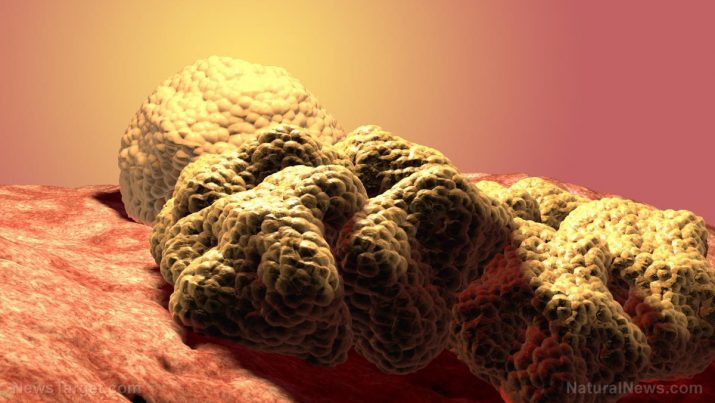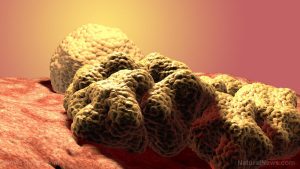
Myelodysplasia – causes, side effects and treatments at NaturalPedia.com
Thursday, May 24, 2018 by Ralph Flores
http://www.naturalpedia.com/myelodysplasia-causes-side-effects-and-treatments-at-naturalpedia-com.html

Myelodysplasia – also referred to as myelodysplastic syndromes (MDS) – is a condition which affects the development of blood cells in the bone marrow. People with MDS have stem cells in the bone marrow that do not mature into blood cells, leading to an increased risk of infection and anemia.
The condition is rare, but people over the age of 60 are at an increased risk. Those who have been treated with either radiation and chemotherapy, as well as those exposed to certain chemicals, are also at risk.

Known risk factors and symptoms of myelodysplasia
The condition affects any type of blood cell. The types of MDS include the following:
- MDS with single lineage dysplasia – The condition results in a person not having enough red blood cells.
- MDS with multilineage dysplasia – Aside from red blood cells, his white blood cells and platelets are also lacking.
- MDS with excess blasts – Aside from lacking red blood cells, white blood cells, and platelets, the person is prone to developing acute myeloid leukemia.
Symptoms will depend on which type of MDS you have. In some occasions, symptoms can start mild, then slowly progress.
- If the condition is because of a lack of red blood cells – weakness, tiredness, and breathlessness
- If the condition is because of a lack of white blood cells – frequent infections
- If the condition is because of a low platelet number – bruising and easy bleeding
In some cases, MDS is asymptomatic and is only picked up in blood tests.
Body systems affected by myelodysplasia
The following are complications from MDS:
- Anemia. When a person has MDS, the number of red blood cells in his body is reduced, causing him to feel tired.
- Recurring infection. If a person has too little white blood cells, it increases the risk of severe infections.
- Excessive bleeding. A person who lacks platelets in his blood will find it difficult to control bleeding.
- Cancer. People with MDS have an increased risk of developing cancer in the blood cells (leukemia).
Food items or nutrients that may prevent or relieve myelodysplasia
There is no information yet on diets that can prevent MDS, but there are some recommended items that can treat MDS-related symptoms and its underlying causes. These do not necessarily cure the condition but prevent its progression.
- Hydrogen peroxide attacks disease-causing agents in the bone and helps improve blood health.
- Curcumin is known for its anti-inflammatory and analgesic properties which help MDS-related symptoms.
- Gingerol inhibits inflammation and removes toxins from the body.
Treatment and management options for myelodysplasia
Depending on its severity, MDS patients are treated with a combination of chemotherapy and stem cell transplant. In some cases, palliative care is added to improve the quality of life of patients.
In addition, a person diagnosed with MDS would do well to adopt the following lifestyle changes to manage the condition.
- Washing hands regularly to eliminate the risk of bacterial or viral infections.
- Cooking food properly.
- Avoiding contact with people who are ill, since MDS patients have compromised immune systems.
Where to learn more
- Heartbreaking testimony reveals the lives ruined by sociopathic cancer fraud doctor Farid Fata
- American Cancer Society admits conventional cancer treatment causes more cancer
- Inflammatory bowel disease drugs can increase leukemia risk by 700%
- To stay healthy, get the blood moving
Summary
Myelodysplasia is a condition which affects the development of blood cells in the bone marrow.
Myelodysplasia is rare, but people over the age of 60, those who have been treated with either radiation and chemotherapy, and those exposed to certain chemicals, are at risk.
Myelodysplasia affects any type of blood cell.
Sources include:
Tagged Under: Tags: Myelodysplasia





